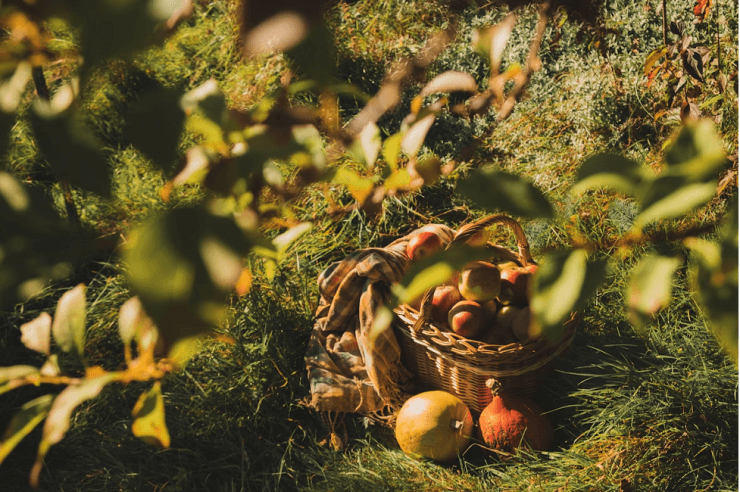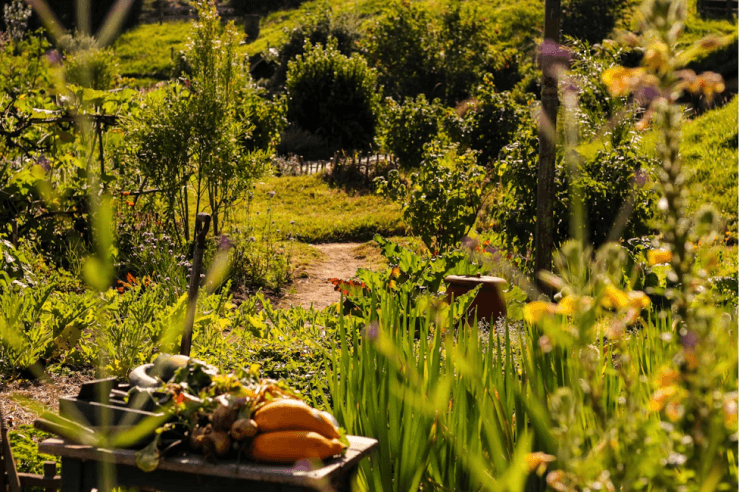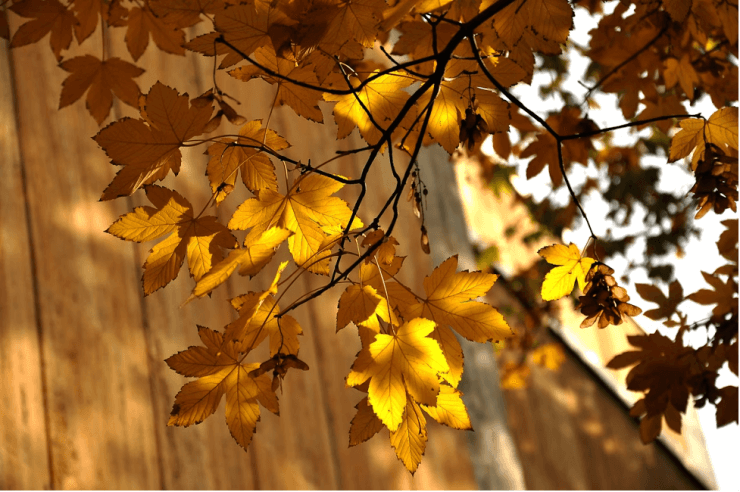
There’s a cozy chill in the air, and your backyard garden is ready to host fall vegetables. This time of year is ideal for growing leafy greens, root vegetables, brassicas and legumes. To help them grow, many gardeners and farmers use companion planting — growing diverse plants close together to foster a more balanced ecosystem that promotes the well-being of all plants in the space.
Trees are the ultimate companions for a thriving fall vegetable garden. They support an extended growing season, natural pest control, improved microclimate and enhanced aesthetics. Strategic tree planting is a game-changer for fall vegetable gardens.
Why Trees Matter in the Fall Vegetable Garden
You may have a secret ingredient for your homemade pumpkin pie or hearty vegetable stew, but have you considered one for your cool-season vegetable garden? Companion planting trees offers a multitude of benefits when done right. Also, planting trees in the fall gives trees a head start on building their root system, which is important to help them thrive before the summer heat.
Microclimate Magic
Microclimates can help extend the growing season of cool-season crops by creating a buffer against temperature fluctuations and harsh winds. Fall garden trees have a natural cooling effect through evapotranspiration, during which they absorb water and release it as vapor, utilizing and cooling environmental heat in the process. When your garden environment is more stable, plants can grow more reliably.
The Shade Factor
Shade shifts with the time of day and season. It’s a myth that all vegetables need full sun to grow into bountiful harvests — while many crave ample sunlight, there are varieties you can grow in partial shade, including carrots, broccoli and cabbage. The shade from harsh sunlight can prevent bolting and heat stress.
Natural Pest Control
Trees can attract beneficial insects and birds that prey on garden pests. Evergreens provide year-round shelter and food sources, like pine nuts or juniper berries. Oak trees are known for producing acorns — a favorite food of squirrels and bird species. Long-lived beech trees produce nuts.
Visual Appeal
Beyond fostering a healthy garden, companion planting trees can enhance your property’s curb appeal and raise its sale value. A Michigan University study found that trees can increase property values up to 11% when they’re well-trimmed and strong. Strategic placement and landscaping can frame your garden, house, pond or other features in the yard.

There are numerous considerations for companion tree selection to make before digging into your cool-season vegetable garden.
Size and Shape
A tree’s mature size will impact sunlight and space, such as how smaller ones block less sunlight from reaching your garden. Pruning is the primary method of controlling size and shape, and it promotes better fruit production and removes damaged or diseased branches that could fall onto your vegetables below. Late winter is regarded as the best time of year to trim trees because you have improved visibility of branches and dormant ones heal faster.
Deciduous vs. Evergreen
Deciduous trees lose their leaves and go dormant during the colder months, and evergreens have foliage year-round. Both can be excellent companion planting trees, depending on your fall garden’s specific needs. Plus, using deciduous and evergreen trees together can strike a balance of their benefits.
Deciduous
Pros:
- Fallen leaves allow winter sunlight to reach the garden below.
- They are generally strong in harsh or fluctuating climate conditions.
Cons:
- They lack aesthetic appeal when their leaves drop in the winter.
Evergreen
Pros:
- They provide continuous greenery throughout the year.
- They shelter gardens from winter winds.
Cons:
- They can block winter sunlight.
Root System
Healthy roots are crucial for plants to gather nutrients and moisture from the soil. Some expand outward or in unexpected patterns, which can interfere with other roots and even cause structural damage to paths and foundations on the surface.
Choose trees with noninvasive roots to avoid competition with vegetables. Amur maple, serviceberry, crabapple and certain oak trees are known to have hardy roots with a more controlled spread.
Top Species of Fall Garden Trees for Your Region
Select trees that are well-suited to your local climate and soil conditions. While bald cypress trees may be suitable in southeastern states, pine trees can better handle the colder climates of northern states. Generally, here are some of the best trees for vegetable gardens:
- Fruit trees: Depending on your climate, consider dwarf varieties of apple, pear or plum trees that thrive in fall temperatures. These can shelter your vegetable garden while producing even more delicious crops.
- Nitrogen-fixing trees: Alder or other legumes can improve soil fertility. Prune branches and leaves from these trees to create green manure for your garden beds.
- Native trees: These varieties are well-adapted to your area, so they better support local ecosystems and require less maintenance than nonnative trees.
Maximize the Benefits With Strategic Tree Placement

Companion planting trees support your cool-season garden, especially when they are optimally arranged on your property.
Sunlight and Shade Patterns
Gardeners and farmers should use the sun’s path in the fall to determine optimal tree placement and consider the fall garden trees’ shadows throughout the day. For instance, south-facing gardens receive the most sun exposure, so companion trees planted on the south side can block low-angle sunlight and prevent sun damage.
Wind Protection
Trees function as windbreaks to protect delicate cool-season crops. Westerlies — a type of global wind pattern — cause the strongest winds in the U.S. to typically blow from the west to the east, so trees planted on the west side of the garden can block these gusts. According to the Kansas Forest Center, the ideal spacing between windbreak trees is 6 to 18 feet for deciduous trees and 6 to 16 feet for pines and other evergreen trees.
Soil Improvement
Trees can improve soil drainage and fertility through leaf litter and root decomposition. Strong roots can also prevent erosion from water or wind. Mulching around trees for your vegetable garden can help the ground retain moisture and suppress weeds. To ensure your soil is safe for growing edible plants, you can collect and send a sample to your nearest U.S. Department of Agriculture extension program for a small fee.
When to Call an Arborist
Professional help is often essential for large-scale tree planting to address health issues and recover from storm damage. Consulting with a certified arborist provides expert guidance for tree selection and placement. They can offer suggestions based on the specific needs of your fall vegetable garden. You may want to attract birds to prevent bugs from dining on your root vegetables or need more shade to avoid sun scorched, dehydrated leafy greens.
Grow a Bountiful Garden With Fall Garden Trees
Using the best trees for your vegetable garden can transform your yield. Companion planting trees support stable microclimates, provide shaded areas and extend the growing season. Gardeners and farmers should embrace these cool-season combinations and experiment with different pairings of trees and vegetables to make the most of their fall gardens.



